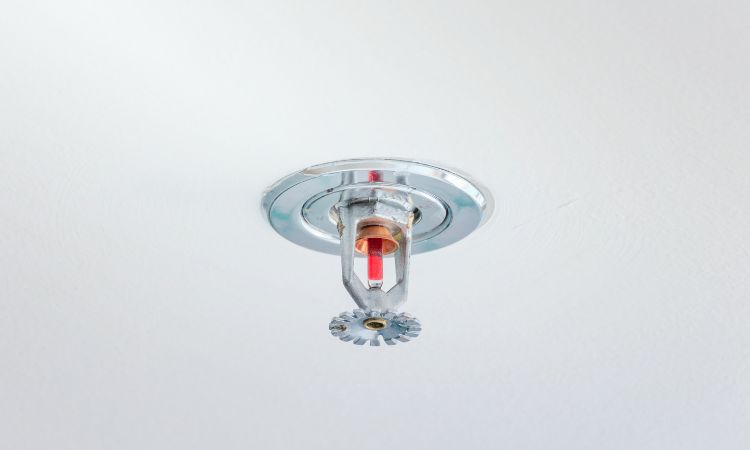
The United States fire sprinklers market size reached a value of about USD 6 billion in 2023. The market is further expected to grow at a CAGR of 10.1% in the forecast period of 2024-2032 to reach a value of approximately USD 14.22 billion by 2032. This significant growth highlights the increasing importance of fire sprinklers in modern safety measures.
This blog post delves into the dynamics of the United States fire sprinklers market, exploring its current state, future projections, and regional variations. We’ll analyze the market drivers and challenges, technological advancements, and regulatory landscape that shape this crucial fire safety segment.
Market Overview
Fire sprinkler systems are a network of pipes, sprinkler heads, and water supply that automatically activate in a fire event. The market can be segmented by type of sprinkler system (wet, dry, pre-action), application (residential, commercial, industrial), and service (installation, inspection, maintenance).
Key components of a fire sprinkler system include:
- Water Supply: Provides the pressurized water for sprinkler activation.
- Control Valves: Regulate water flow to different sprinkler zones.
- Sprinkler Heads: Disperse water in a specific pattern to extinguish the fire.
- Fire Detection Systems: Trigger the sprinkler activation upon detecting smoke or heat.
Market Dynamics
Several factors are propelling the growth of the United States fire sprinklers market:
- Growth Drivers
- Increasing Emphasis on Fire Safety Regulations: Stringent fire codes are being implemented across the country, mandating fire sprinklers in various building types.
- Rising Awareness about the Importance of Fire Sprinklers: Public education campaigns and growing knowledge about the life-saving benefits of sprinklers are driving demand.
- Technological Advancements in Fire Sprinkler Systems: Innovations like smart sprinkler heads and cloud-based monitoring systems are enhancing efficiency and reducing false alarms.
However, challenges also exist:
- Challenges
- High Installation Costs: The initial investment for installing a fire sprinkler system can be significant, especially for retrofitting existing buildings.
- Maintenance Challenges: Regular inspection and maintenance are crucial for optimal performance, requiring skilled personnel and ongoing costs.
- Competition from Alternative Fire Suppression Technologies: Technologies like mist suppression systems present competition in some specific applications.
Market Forecast (2024-2032)
-
Projected Market Size and Growth Trends: Analysts predict the market to reach USD 14.22 billion by 2032, with a CAGR of 10.1%. This growth reflects the increasing awareness of fire safety and the growing construction sector.
-
Regional Analysis:
- Market Trends in Key Regions: The market growth is expected to be uneven across regions. Stringent regulations and high population density in the Northeast and West Coast might lead to faster market expansion compared to other regions.
- Factors Influencing Regional Market Dynamics: Local building codes, construction trends, and government initiatives promoting fire safety will significantly influence regional market growth.
-
Competitive Landscape:
- Key Players and Market Share Analysis: Leading manufacturers, distributors, and service providers dominate the market. Understanding key players and their market share is crucial for industry stakeholders.
- Strategies Adopted by Market Leaders: Mergers and acquisitions, technological advancements, and strategic partnerships are some key strategies employed by market leaders to maintain their position.
- Emerging Players and Market Disruption: The market may see disruption from innovative startups offering cost-effective, easy-to-install sprinkler systems or cloud-based monitoring solutions.
Technological Trends
The fire sprinkler industry is constantly evolving with new technologies:
- Innovations in Fire Detection and Control Panels: Advanced panels with faster response times and improved communication capabilities are being developed.
- Advancements in Fire Suppression Reagents: Environmentally friendly fire suppression solutions with improved extinguishing capabilities are being explored.
- Integration of IoT and AI in Fire Sprinkler Systems: Integrating the Internet of Things (IoT) and Artificial Intelligence (AI) can enable real-time monitoring, predictive maintenance, and data-driven insights for improved fire safety management.
Market Opportunities
The US fire sprinklers market presents numerous opportunities:
- Untapped Market Segments: Focus on retrofitting existing residential and commercial buildings with fire sprinklers offers significant potential.
- Emerging Applications of Fire Sprinklers: Fire sprinklers can be adapted for use in data centers, renewable energy facilities, and historical buildings with modifications.
- Potential for Market Expansion in Non-residential Sectors: Increased adoption in warehouses, logistics centers, and healthcare facilities presents a lucrative growth opportunity.
Regulatory Landscape
Fire safety regulations in the United States are a complex web of federal, state, and local codes. Key regulatory bodies include:
- National Fire Protection Association (NFPA)
- International Code Council (ICC)
- Occupational Safety and Health Administration (OSHA)
These organizations establish minimum fire safety standards, including requirements for fire sprinkler systems in specific building types. Understanding the relevant regulations is crucial for all stakeholders in the fire sprinkler market.
Impact of Regulatory Changes on the Market
Changes in fire safety regulations can significantly impact the market:
- Stricter regulations mandating fire sprinklers in more building types will drive market growth.
- Government incentives for fire sprinkler installation can further stimulate market demand.
- Regulations promoting the use of advanced technologies like smart sprinkler systems can influence market trends.






